Airborne & Space Telescopes
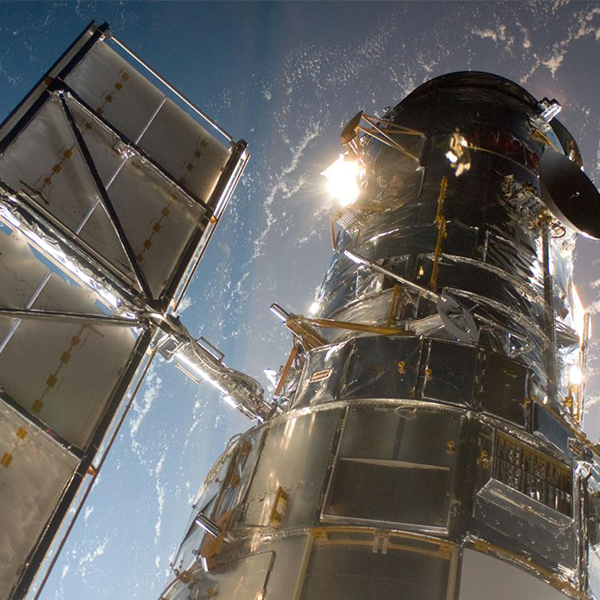
Hubble Space Telescope as seen during a servicing mission in 2009 (NASA)

Hubble Space Telescope as seen during a servicing mission in 2009 (NASA)
How does this align with my curriculum?
Learn about telescopes that do their work high in Earth’s atmosphere and in space.
Airborne Telescopes
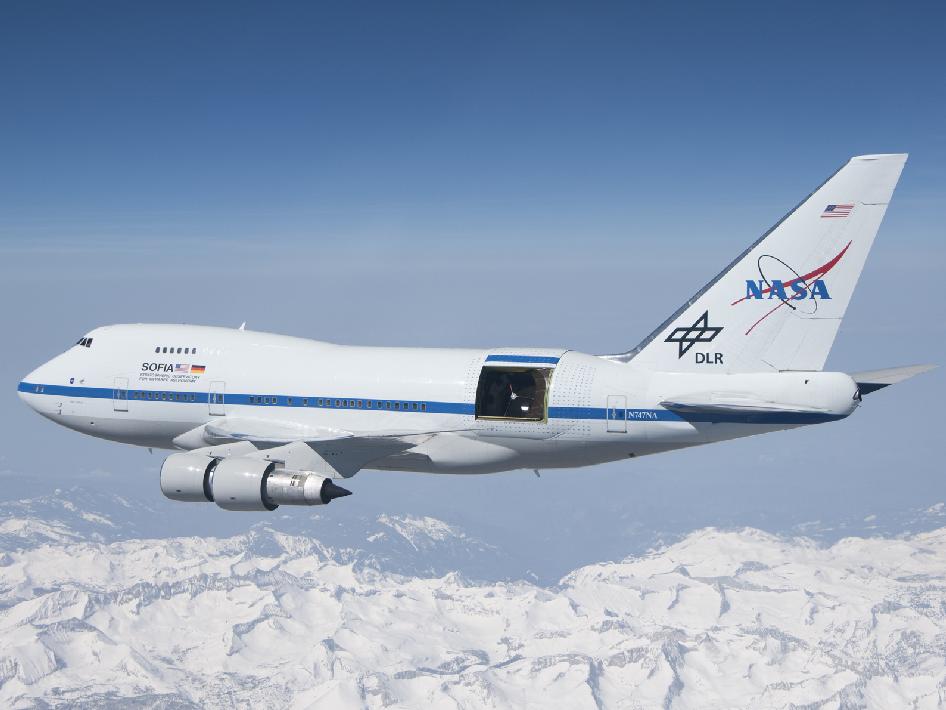
Stratospheric Observatory for Infrared Astronomy (Source: Jim Ross [Public domain] via Wikimedia Commons).
Image - Text Version
Shown is a colour photograph of a plane in flight, with a large open door.
The plane is shown in flight, high above a snowcapped mountain range. The sky behind goes from light blue, near the mountains, to dark blue at the top of the image.
The plane is large and white, about the size of airliner. It has the NASA logo, and another logo on the tail. A large, square opening has been cut into the side of the body, near the back.
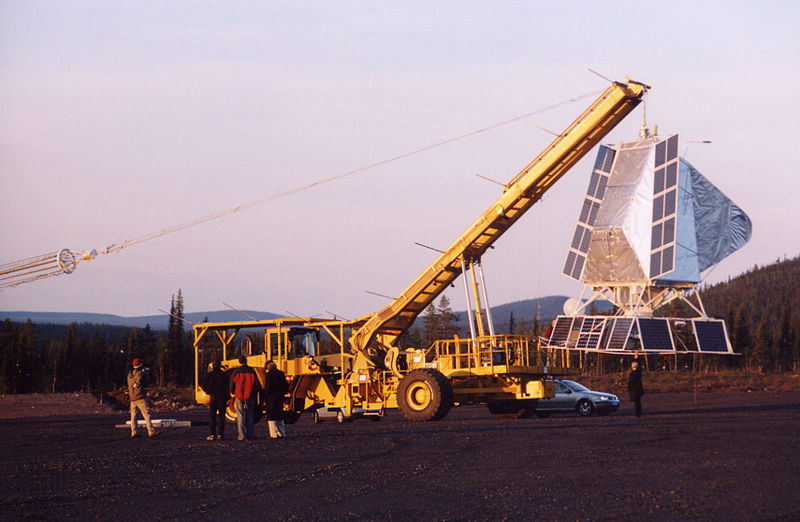
BLAST on its launch vehicle in 2005 (Source: Mtruch [CC BY-SA] via Wikimedia Commons).
Image - Text Version
Shown is a colour photograph of a white fabric structure with solar panels, hanging from a crane.
The structure has a triangular back and a flat front. Long rows of blue solar panels bracket the front edges. The base of the structure includes metal legs, also surrounded by solar panels.
Several people and a car are gathered around the yellow crane. It glows in the setting sun. In the background are low hills and a wide purplish pink sky.
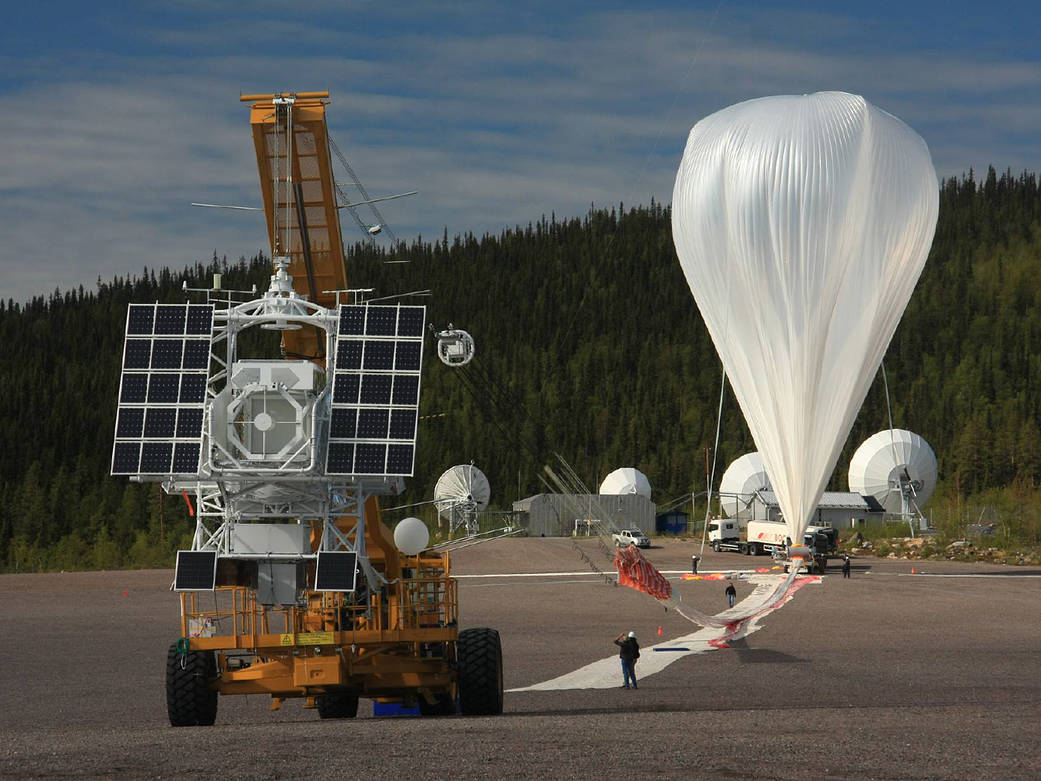
Sunrise telescope preparing for launch (Source: NASA).
Image - Text Version
Shown is a colour photograph of a very large, white fabric balloon at the end of a runway.
The balloon is teardrop-shaped. It is inflated so that it is wide at the top, and gathered to a small point on the ground. It is made from material that looks soft and thin, almost translucent. It is anchored to the ground on a long set of ropes or cables attached to a large yellow vehicle with solar panels.
Several people stand alongside the ropes. They are tiny figures compared to both the balloon and the vehicle. The closest person is much smaller than one tire, and the balloon looks significantly larger than the vehicle.
In the background, four white satellite dishes are installed in a row, against a low hill covered in evergreen trees.
This telescope went up in 2009, 2013 and 2022. Each time it took off from the Esrange Space Center near Kiruna, Sweden. This is very close to the Arctic circle. By going up in the summer, it could take non-stop observations of the Sun for several days. Unfortunately, the 2022 flight was not successful. Shortly after launch, scientists realised that it was not facing the Sun and had to bring it down.
Did you know?
High altitude balloons allow these telescopes to reach higher altitudes than airplanes. SUNRISE even went three times higher!
Space Telescopes
Without a doubt, telescopes have changed how we see the universe. They allow us to learn what lies beyond Earth long before we are able to explore it in person. But not all telescopes do their work from the ground or high in the atmosphere. Some go higher still. Why is this?
At ground level, telescopes need to look up through the Earth’s atmosphere. But this can make astronomy difficult. It’s kind of like looking through fog. Looking through the atmosphere can make images blurry. It can also absorb some wavelengths of light.
As a result, many telescopes are launched into space instead. In order to see in all of these wavelengths, NASA launched its Great Observatories Program. As part of it, they built and launched four space-based observatories. These were the:
- Hubble Space Telescope
- Chandra X-Ray Observatory
- Spitzer Space Telescope
- Compton Gamma-Ray Observatory
Hubble: Voyage of Discovery (2019) by NASA (2:30 min.)
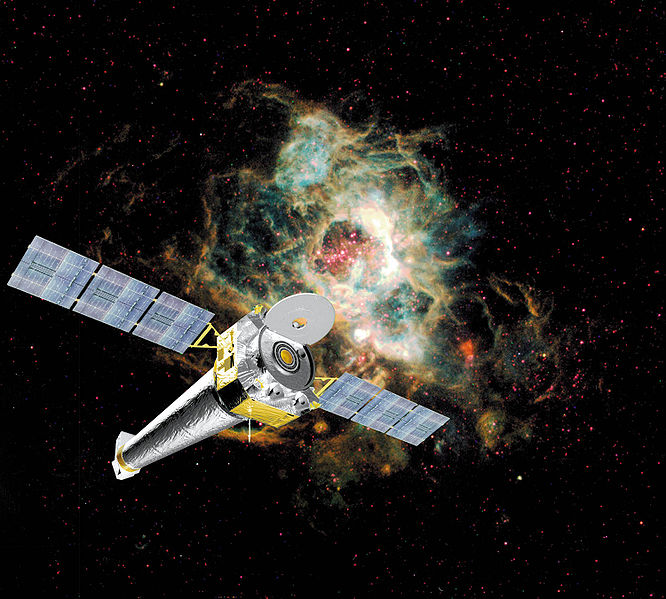
Chandra X-ray Observatory (Source: NASA via Wikimedia Commons).
Image - Text Version
Shown is a colour photograph of a long, silver, spherical structure with two wings made from solar panels.
The central body of the structure is narrow at the back, and wider at the front. It looks to be covered with thin silver material, like tinfoil. Its front end is a round door that has been lifted open to reveal a gold-coloured circle. Long wings extend to each side, near the front. These are made from a row of pale blue solar panels.
In the background is a swirl of brightly coloured gases, against black space.
NASA's Spitzer Space Telescope (2020) by NASA (4:05 min.)
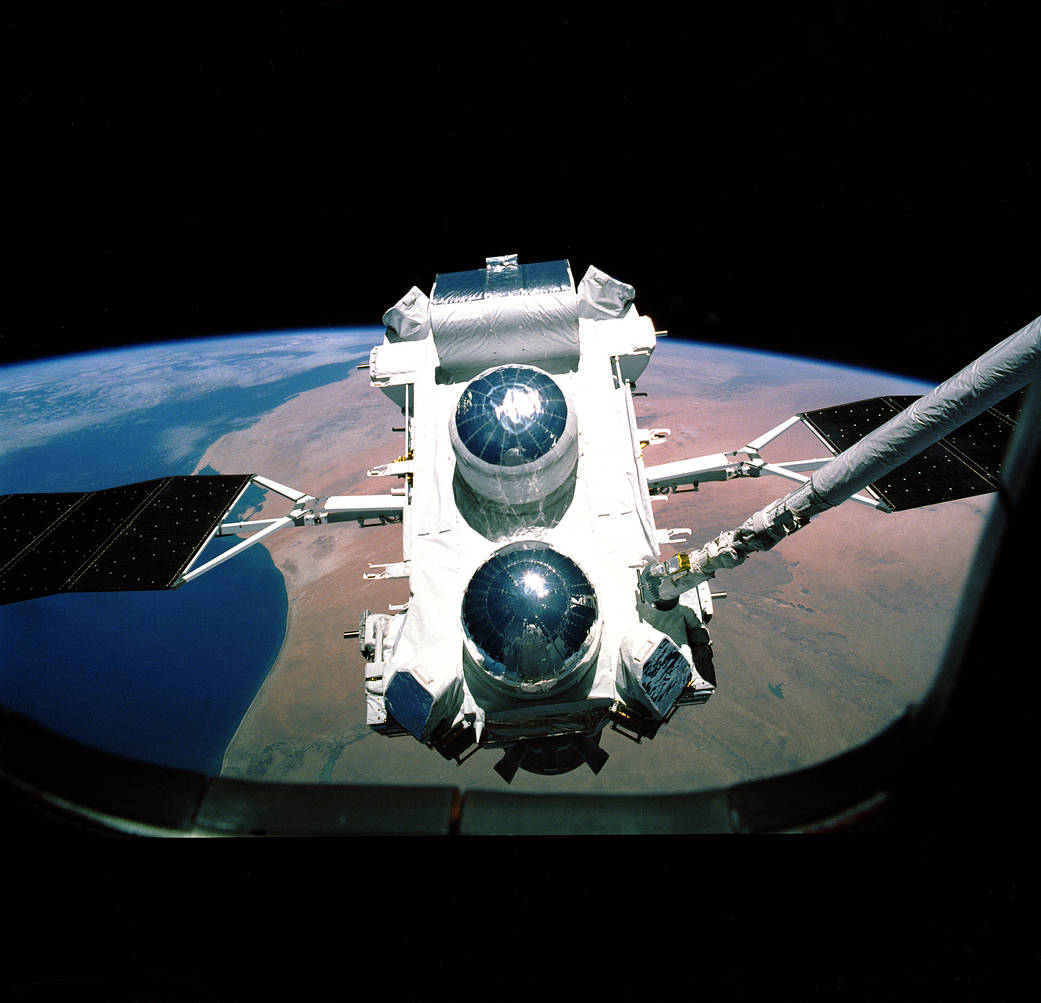
Launch of the Compton Gamma-Ray Observatory (Source: NASA).
Image - Text Version
Shown is a flat, white rectangular structure with two large silver domes, floating above Earth.
The camera is looking out a window or door with a curved frame. The satellite is attached to a long white mechanical arm, outside. Its central body is rectangular and white, with many small protrusions. There are two large, silver dome shapes on the top side, and another is visible on the bottom. Long wings stretch out to either side of the body, but they are not fully visible.
In the background, the curvature of Earth is blue against black space. Below is a large, beige continent.
The next generation of space telescopes, the James Webb Space Telescope. It was launched on 25 December 2021, For more about this telescope, read the Seeing the Universe with the James Webb Telescope backgrounder.
In the end, it takes a lot of different telescopes looking at different wavelengths to get a complete picture of our universe. But regardless of what part of the spectrum you observe, there's always something new out there to look at and study.
Learn More
Sunrise Gallery
Check out images of the SUNRISE telescope in this photo gallery on the Max Planck Institute for Solar System Research website.
NASA's Great Observatories
This page on the NASA website has information about the four telescopes as well as links to specific NASA web pages for each.
References
Evans, B. (June 4, 2020). Remembering the Compton Gamma Ray Observatory 20 Years after its death. Astronomy.
Goddard Space Flight Center, National Aeronautics and Space Administration (n.d.). James Webb space telescope.
Harvard-Smithsonian Center for Astrophysics (n.d.). Chandra x-ray observatory.
Space Telescope Science Institute (n.d.). Hubblesite.
Spitzer Space Telescope (Jan 30, 2020). NASA's Spitzer Space Telescope Ends Mission of Astronomical Discovery. NASA Jet Propulsion Laboratory, California Institute of Technology.